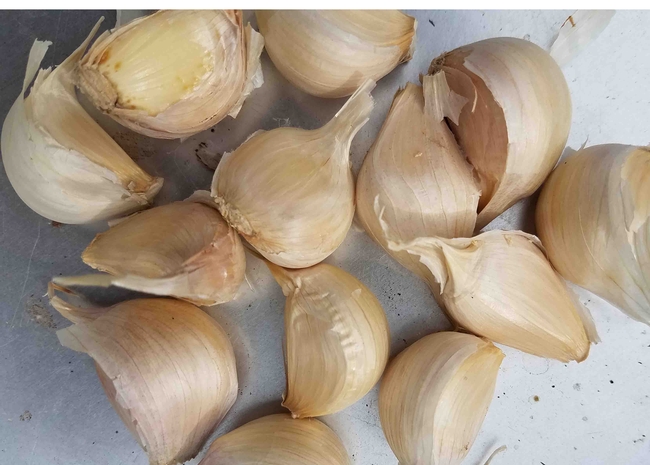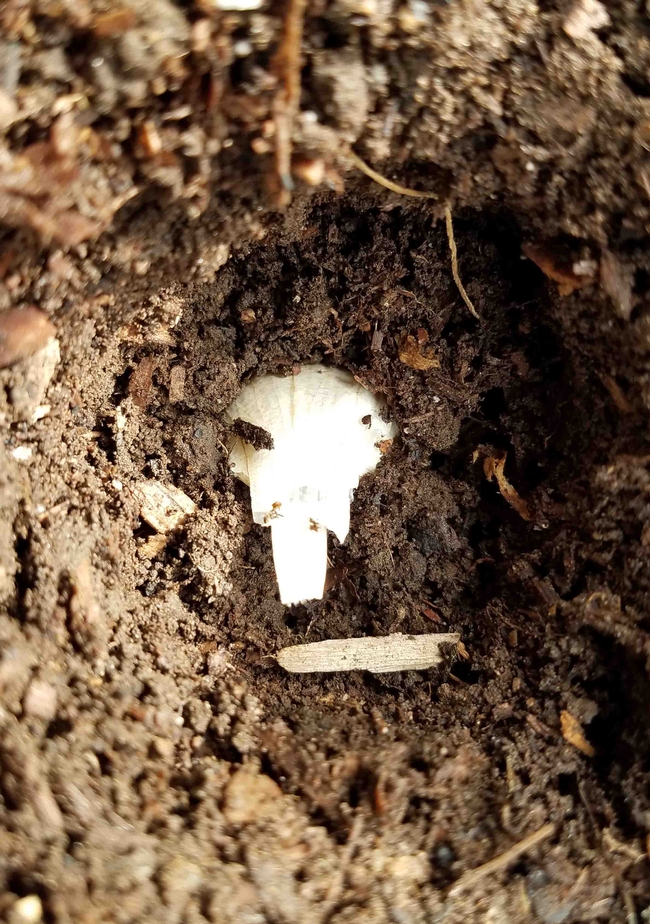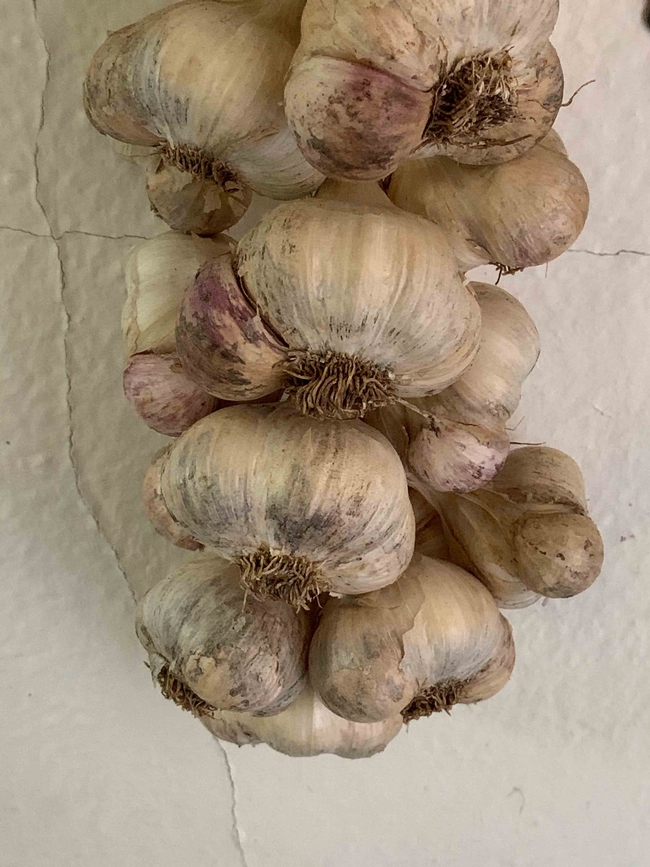Fall is the best time to plant garlic for a summer harvest. Both the softneck and hardneck types of garlic can be planted now. The softneck varieties are found in most grocery stores. They have a mild flavor and store very well. Two recommended softneck varieties for our climate are “California Early” and “California Late.” “California Early” grows rapidly, can be harvested early, and does not have a hot, biting flavor. “California Late” has a stronger flavor, does better in warmer climates and is better for making garlic braids. Hardneck garlic has more complex, distinctive flavors but does not store as well.

Garlic is in the Allium family along with onions, leeks and shallots. To prevent disease it is important to rotate your Allium crops, and not plant them in the same spot each year.
Garlic likes loose, well-drained soil. Mix in compost before planting to provide nitrogen. During the growing season, add more nitrogen by side-dressing or by applying fish emulsion. Do not add nitrogen closer than 60 days before harvest.

Choose the varieties you prefer to eat and purchase whole bulbs. Break the bulb into cloves, leaving the peels on. It is best to plant the cloves soon after breaking the bulb apart. Plant the largest cloves to get the largest bulbs at harvest time. Planting small cloves will result in small bulbs. Plant the clove with the blunt end down and cover with two inches of soil. Plant the cloves 4-6 inches apart in rows that are spaced one to two feet apart. Mulch the planted cloves with compost, leaves or straw. Mulching controls weeds and helps moderate soil moisture. Remove the mulch in the spring. Garlic likes high soil moisture, but do not saturate the soil. Normal winter rains should provide enough moisture; irrigate in winter if rainfall amounts are low. Be prepared to irrigate when warmer weather dries out the soil between March and June if spring rainfall is limited.
As hardneck garlic grows it will develop leaves along with a curly flower stalk which is called a scape. Cutting the scapes in summer when they begin to curl down will result in larger bulbs. For both hardneck and softneck garlic, stop watering when the tips of the leaves begin to turn brown. As the leaves dry further and the tops fall over, periodically check the bulb size by digging around the stalk or digging up a bulb.

Plant Sale!!! The Master Gardeners will hold their Fall 2021 Plant Sale on October 30, from 9am to 1pm at the Demonstration Garden at Patrick Ranch (10381 Midway, Durham). Along with the Plant Sale, there will be two free workshops: “Gardening with Natives” at 10am, and “Berry and Grape Gardening” at 11am. No registration is required for these workshops; Covid safety protocols will be followed.
UC Master Gardeners of Butte County are part of the University of California Cooperative Extension (UCCE) system. To learn more about us and our upcoming events, and for help with gardening in our area, visit our website. If you have a gardening question or problem, email the Hotline at mgbutte@ucanr.edu (preferred) or call (530) 538-7201.